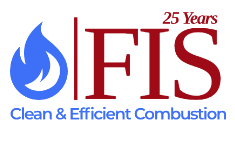Technical Articles
"Ashutosh Garg is Vice President of Furnace Improvements in Sugar Land, TX. He has more than 40 years of experience in the process design, sales, and troubleshooting of all combustion systems. He graduated in chemical engineering in 1974 from the Indian Institute of Technology, Kanpur. He is a registered professional engineer in California, and a member of AIChE."
1. Good Heater Specification Pay Off
Originally appeared in: Chemical Engineering | Date: July 18, 1988 issue
Knowing the major parameters that influence fired heater design and operations, engineers in operating companies can write specifications that will enable vendor engineers to design heaters better suited to process operations. To make a complex subject a bit simpler, this article focuses chiefly on the natural-draft heater...
2. Better Burner Specifications
Originally appeared in: Hydrocarbon Processing | Date: August 1989 issue
Consider these burner specifications to improve fired heaters performance.
Specifying the right requirements for fired heater burners can improve the heater’s operation and reduce maintenance. With the right type of burners, fired heater capacity can be increased by 5-10% and thermal efficiency by 2-3%. Burner selection and specification should be done carefully as they have a direct impact on heater operation...
3. How to Boost the Performance of Fired Heater
Originally appeared in: Chemical Engineering | Date: November 1989 issue
Selective revamping can hike thermal efficiency and capacity
A fired heater is an insulated enclosure in which heat liberated by the combustion of fuel is transferred to a process fluid flowing through tubular coils. Typically, the coils are arranged along the walls and roof of the combustion chamber, where heat is transferred primarily by radiation. Heat can also be transferred via convection in a separate tube bank...
4. Make Every BTU Count
Originally appeared in: Chemical Engineering | Date: October 1990 issue
Although the world has been awash with oil, recent events in the Middle East show how tenuous that condition can be. Fore-casters had predicted that energy prices would be climbing by the middle of the decade, if not sooner, even without the spur of Iraq’s invasion of Kuwait. Energy conservation is expected to again become popular and fuels for fired heaters to be-come heavier, dirtier and more difficult to burn. Complicating matters, pollution con-trol laws will further restrict both gaseous and solids emissions...
5. Optimize Fired Heater Operations to Save Money
Originally appeared in: Hydrocarbon Processing | Date: June 1997 issue
Use these guidelines and case studies to reduce energy use and extend equipment life.
Fired Heaters are an essential component of most process plants. They are primarily used to heat all types of hydrocarbons and also hot coils, steam or air. Fired heaters are major consumers of energy and even the smallest efficiency improvements can save thousands of dollars. Typically, most fired heater operations can be optimized to save money.
6. Revamp Fired Heaters to Increase Capacity
Originally appeared in: Hydrocarbon Processing | Date: June 1998 issue
Use these guidelines to ensure a successful project.
The number of new fired heaters being built is steadily coming down in USA. The major thrust in the last 5 years has been in the area of revamping fired heaters. The plant operators are trying hard to make their operation profitable. They are trying to extract maximum capacity from their heaters. Most plant owners are re-vamping their fired heaters to improve product yield and performance...
7. Improve Vacuum Heater Reliability
Originally appeared in: Hydrocarbon Processing | Date: March 1999 issue
These design, operation and revamp guidelines will help increase run lengths and efficiency.
To improve the reliability of vacuum heaters, a good heater design is the first prerequisite. This must be followed by good heater operation and main-tenance. Together, they can go a long way towards improving heater reliability and run lengths. The vacuum heater is one of the most important heaters in any refinery. In the last few years, vacuum units have become more important due to heavier crudes being processed. The price differential in crudes is also forcing refiners to switch to heavier crudes. This trend is causing vacuum heaters to be overfired. This leads to short run lengths and affects refinery profitability...
8. Get the Most From Your Fired Heater
Originally appeared in: Chemical Engineering | Date: March 2004 issue
Though the functioning of these widely used heaters it appears simple, there is more to efficient operation than meets the eye. A common stum-bling block is the control of draft.
Fired heaters are major consumers of energy in the chemical process industries (CPI) especially at petroleum refineries and petrochemical plants. Accounting for as much as 70% of total plant energy consumption in some instances. While most plant engineers and operators are aware of the importance of controlling excess oxygen in fired heaters, they often overlook a key determinant of efficient heater operation; the control of their draft, namely, the negative pressure inside the vessel with respect to the atmosphere...
9. Fired Heaters for General Refinery Service-API 560 Standard: 1986-2016
Originally appeared in: Furnace Improvements Services Inc. | Date: May 2017 issue
API Specifications (standards) are published by American Petroleum Institute as an aide to procurement of standardized equipment and materials API publications may be used by anyone desiring to do so.
API-560 standard for fired heater for general refinery service is based on accumulated knowledge and experience of petroleum refiners, fired heater manufacturers and engineering contractors. The primary purpose of this standard is to establish minimum mechanical requirements…


